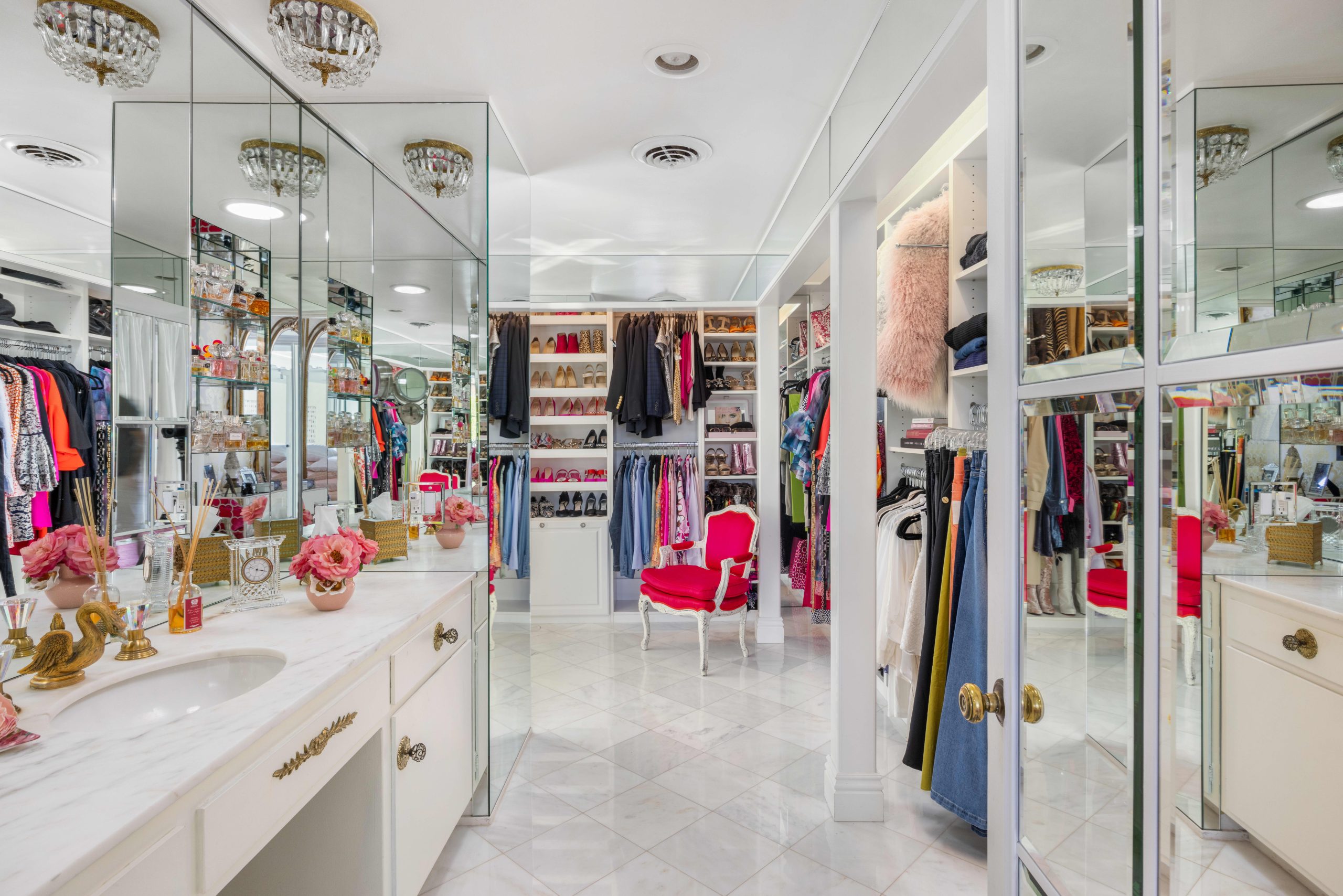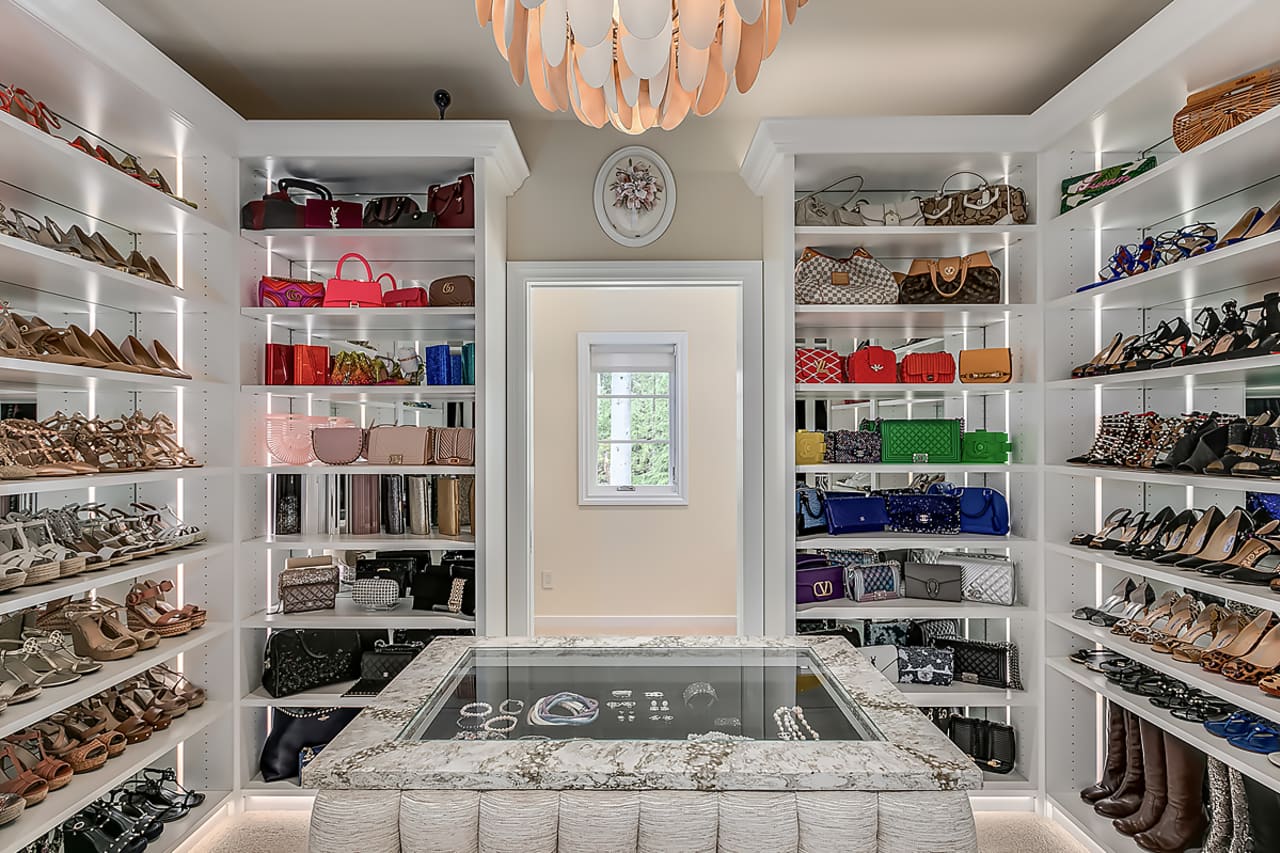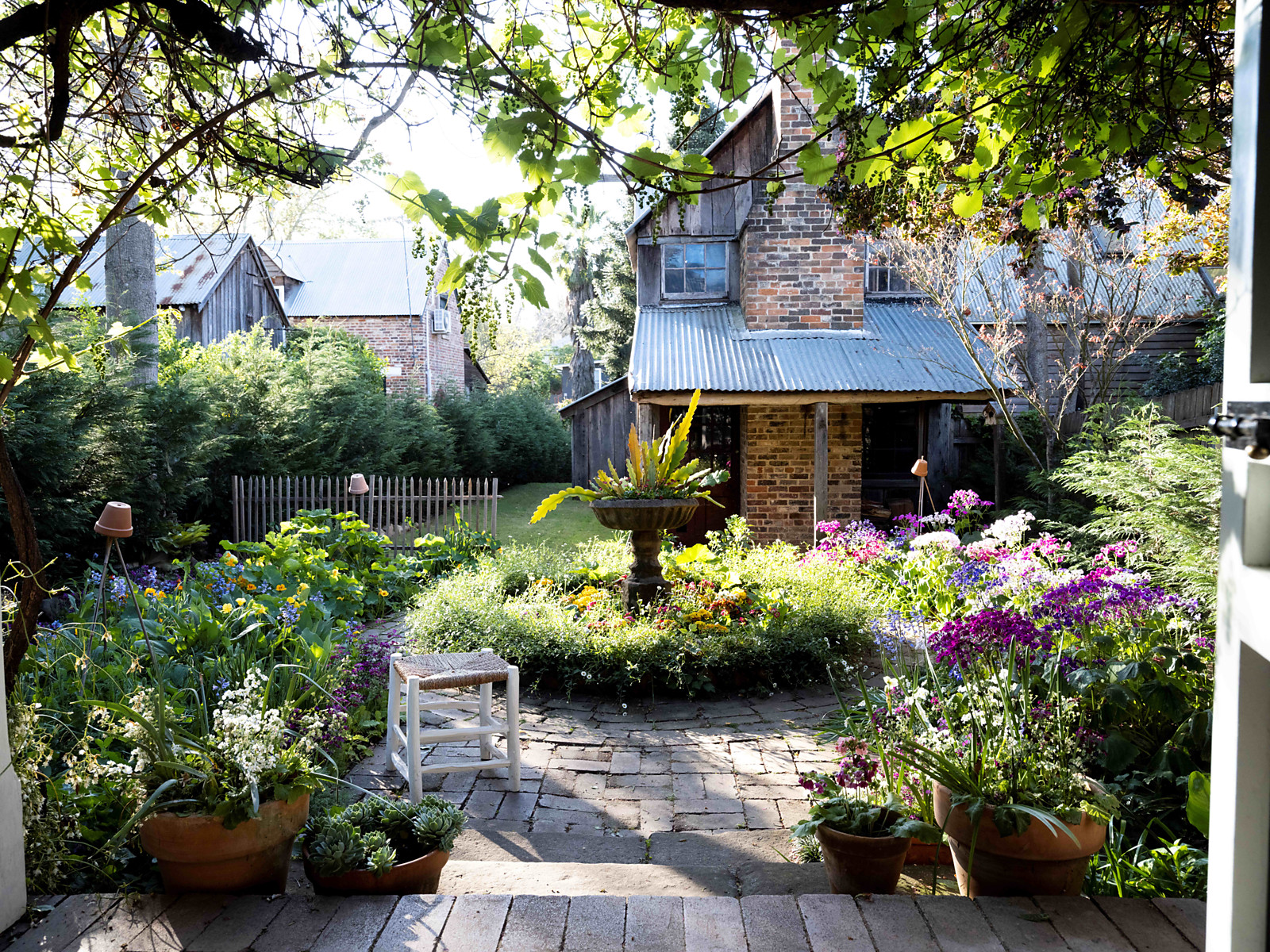Forget the Pool or Even the Living Room—‘Our Closet Time Is Precious’
Some homeowners are taking the coziness and intimacy of the primary suite’s walk-in wardrobe to the next level and transforming it from functional storage into the home’s centrepiece
A room you might not expect comes to mind when home seller Karen Haines reflects on fond memories at her Hollywood Regency-style house in Palm Springs, California: her bedroom closet.
“Forget the great room, swimming pool or hot tub. All the action in the house happens in the closet. It’s where everyone wants to be,” said Haines of the enormous space, which is decked out with white tones, mirrors, marble and gold finishes, and has double sinks with bird-shaped faucets.
Haines and her husband, Chris, are selling the house, designed by acclaimed architect Robert Marx and on the market with Douglas Elliman for $5.2 million. The couple, both entrepreneurs in the music industry, usually keep classic rock ‘n’ roll playing in the closet all day, she said.
“My daughter and I try on clothes in there, and Chris and I drink coffee in the morning and cocktails come evening,” she said.
For most homeowners, closets are merely functional—that is, a place to hold clothes, accessories and other items that they turn to for everyday wear. Some, however, are taking the coziness and intimacy of the primary suite’s walk-in closet to the next level and turning it into the home’s prized space. It’s become a place where couples can connect at the end of a hectic day or a lounge where owners socialise with friends, enjoy a morning coffee, and, yes, even imbibe with cocktails and wine.
Chris Lim, a real estate agent and former president of Christie’s International Real Estate, said that he is witnessing a redefining of the concept of walk-in closets.
“With the inclusion of features like bar sinks, lounge seating, spacious islands and glass displays and expanded vanity areas, walk-in closets now offer a retreat for morning rituals and post-day relaxation,” he said. “They’ve become hubs of activity and connection in multimillion-dollar homes.”

Part of the trend, he said, is the growing number of fashion and social media influencers, who often use their bedroom closets as their offices or filming space.
When it comes to showpiece closets, Brazilian design firm Ornare is a leading name and charges between $30,000 and close to $1 million for its services.
Claudio Faria, the CEO of Ornare Miami, said that when he opened his business in 2007, closets were an afterthought with homeowners investing their money in zhuzhing up public-facing spaces such as kitchens and family rooms. Now, he said, closets are dominating home design—his business has grown 50% annually for the last five years as a result.
“Closets have become more important because, in the way that wealthy people collect cars and art, they’re collecting clothes, and closets are the venues to show them off,” Faria said. They’re also a unique area to use in your home because of their intimacy and become talking points.”
Ana Paula Siebert Justus is a client and tapped Ornare to bring her vision of a glamorous closet to life. Justus, a fashion influencer, and her husband, Roberto Justus, an entrepreneur, own a five-bedroom condominium in Sunny Isles, Florida. The large wardrobe in their bedroom is awash in green hues, wood and leather. Backlighting features throughout, and there are sections for handbags and clothes plus a hat rack and a vanity with a chair.
“I spend a lot of time in my closet shooting content, so it needs to be in photograph-ready shape,” she said. “It has no door, and one of my favorite ways to connect with Roberto is to catch up as I’m getting dressed for the day or evening events. Our closet time is precious.”
Tina Trahan, a philanthropist and art collector, lives in Los Angeles’s Studio City neighbourhood in a 5,100-square-foot home that was the exterior for the home on “The Brady Bunch” TV series. She shared similar sentiments about her closet. She has repurposed one of the bedrooms into the space and has outfitted it with double-height rolling racks, a three-way mirror, a sofa, a Miele coffee machine and a fridge stocked with drinks including White Claws—her beverage of choice.

Trahan said that she frequently entertains girlfriends, and they love heading to her closet to drink tequila and wine and catch up.
“We end up ordering sushi and eating it there. My closet is 100% our favourite place to hang out,” she said.
Other examples of these double-duty flashy closets abound.
Real estate agent Katrina Barrett of Christie’s International Real Estate Walt Danley | Local Luxury is overseeing the marketing and sale of a $40 million home in Paradise Valley, Arizona. The centrepiece of its primary suite is an expansive closet with seating, a steaming area, hidden panels to store valuables and a secret door leading to a sports barn with a pickleball court and golf simulator.
In another example, Susan Archer is selling her home in Issaquah, Washington, near Seattle, for more than $6 million through Windermere Real Estate/Luxury Portfolio International. She described the property’s primary bedroom’s closet as “a haven for creating memorable moments with friends and family.”
The white-painted space has marble and cream walls and features backlighting, a display case that’s common in upscale boutiques, a washer and dryer, a wet bar, an island and seating.
“Many of my girlfriends and I have gathered around the island, their excitement palpable as they admire my collection. With champagne flutes in hand, the atmosphere is lively and carefree,” Archer said. “Beyond the soirées with friends, my closet holds a special place for precious moments with my daughter. As she grows, her interest in fashion blossoms, and my closet becomes a treasure trove of inspiration for her budding style.”
 Copyright 2020, Dow Jones & Company, Inc. All Rights Reserved Worldwide. LEARN MORE
Copyright 2020, Dow Jones & Company, Inc. All Rights Reserved Worldwide. LEARN MORE
This stylish family home combines a classic palette and finishes with a flexible floorplan
Just 55 minutes from Sydney, make this your creative getaway located in the majestic Hawkesbury region.
Continued stagflation and cost of living pressures are causing couples to think twice about starting a family, new data has revealed, with long term impacts expected
Australia is in the midst of a ‘baby recession’ with preliminary estimates showing the number of births in 2023 fell by more than four percent to the lowest level since 2006, according to KPMG. The consultancy firm says this reflects the impact of cost-of-living pressures on the feasibility of younger Australians starting a family.
KPMG estimates that 289,100 babies were born in 2023. This compares to 300,684 babies in 2022 and 309,996 in 2021, according to the Australian Bureau of Statistics (ABS). KPMG urban economist Terry Rawnsley said weak economic growth often leads to a reduced number of births. In 2023, ABS data shows gross domestic product (GDP) fell to 1.5 percent. Despite the population growing by 2.5 percent in 2023, GDP on a per capita basis went into negative territory, down one percent over the 12 months.
“Birth rates provide insight into long-term population growth as well as the current confidence of Australian families,” said Mr Rawnsley. “We haven’t seen such a sharp drop in births in Australia since the period of economic stagflation in the 1970s, which coincided with the initial widespread adoption of the contraceptive pill.”
Mr Rawnsley said many Australian couples delayed starting a family while the pandemic played out in 2020. The number of births fell from 305,832 in 2019 to 294,369 in 2020. Then in 2021, strong employment and vast amounts of stimulus money, along with high household savings due to lockdowns, gave couples better financial means to have a baby. This led to a rebound in births.
However, the re-opening of the global economy in 2022 led to soaring inflation. By the start of 2023, the Australian consumer price index (CPI) had risen to its highest level since 1990 at 7.8 percent per annum. By that stage, the Reserve Bank had already commenced an aggressive rate-hiking strategy to fight inflation and had raised the cash rate every month between May and December 2022.
Five more rate hikes during 2023 put further pressure on couples with mortgages and put the brakes on family formation. “This combination of the pandemic and rapid economic changes explains the spike and subsequent sharp decline in birth rates we have observed over the past four years,” Mr Rawnsley said.
The impact of high costs of living on couples’ decision to have a baby is highlighted in births data for the capital cities. KPMG estimates there were 60,860 births in Sydney in 2023, down 8.6 percent from 2019. There were 56,270 births in Melbourne, down 7.3 percent. In Perth, there were 25,020 births, down 6 percent, while in Brisbane there were 30,250 births, down 4.3 percent. Canberra was the only capital city where there was no fall in the number of births in 2023 compared to 2019.
“CPI growth in Canberra has been slightly subdued compared to that in other major cities, and the economic outlook has remained strong,” Mr Rawnsley said. “This means families have not been hurting as much as those in other capital cities, and in turn, we’ve seen a stabilisation of births in the ACT.”
This stylish family home combines a classic palette and finishes with a flexible floorplan
Just 55 minutes from Sydney, make this your creative getaway located in the majestic Hawkesbury region.






















